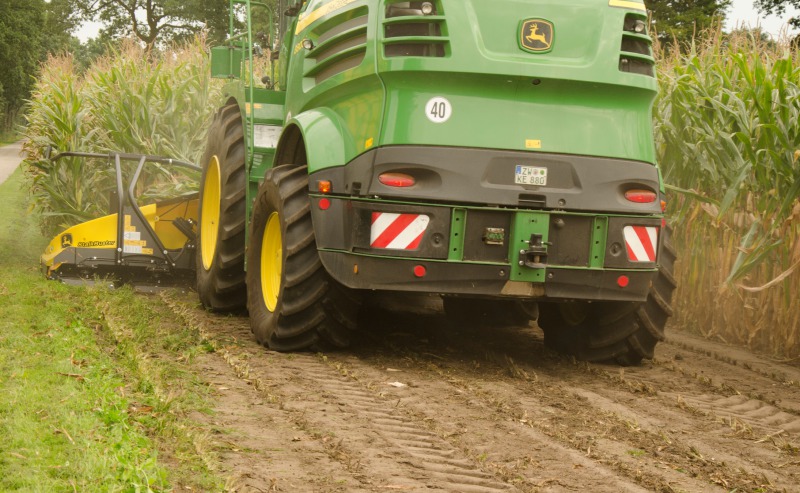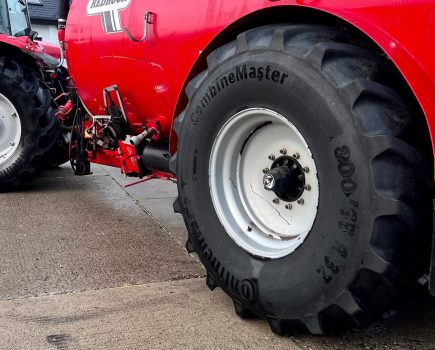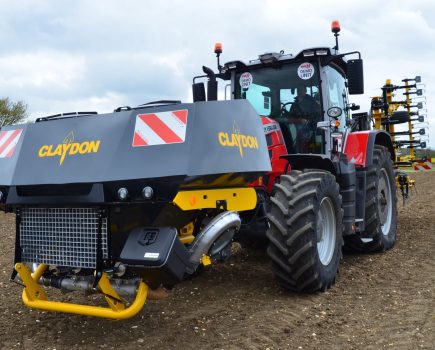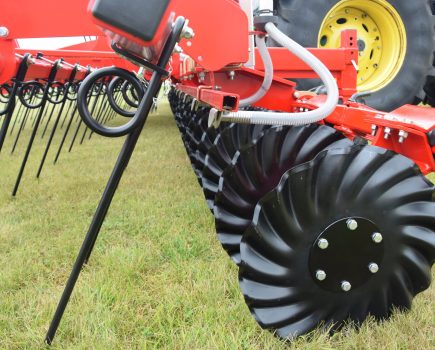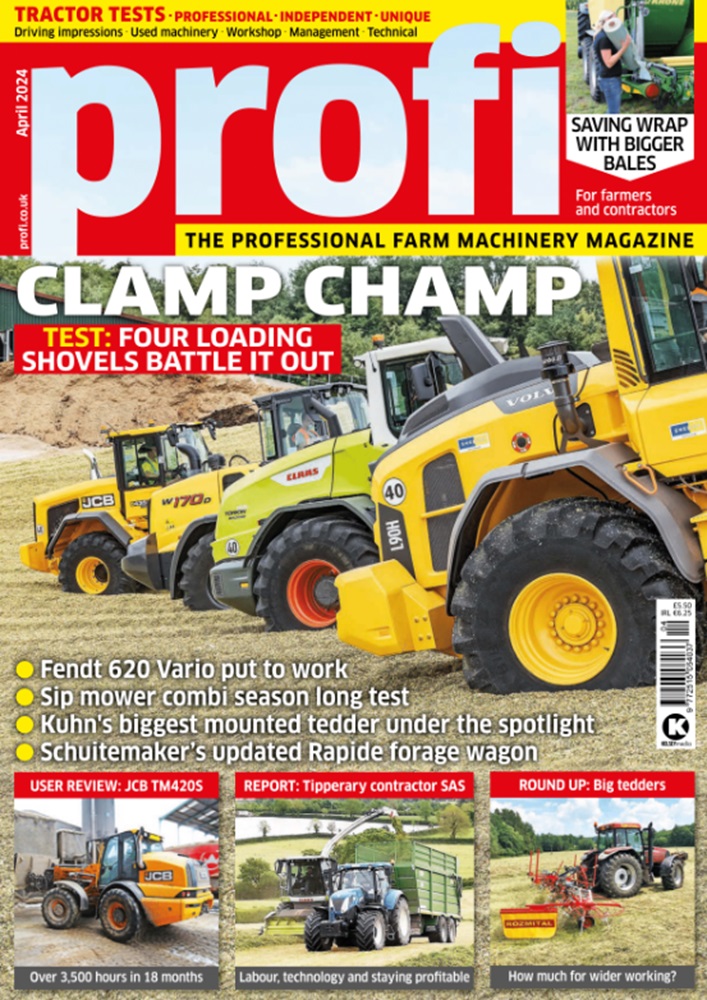The maize worm or corn borer is fast becoming a serious problem in many European countries, including Germany, where it is believed to be the number one pest in maize silage crops. Causing yield and quality losses, mechanical control measures include ploughing to a depth of at least 40cm to kill the larvae, but one of the most popular methods is to chop maize stubbles immediately after harvest. The problem with this is that up to 30% of the stubble is flattened by SPFH and tractors and trailer wheels, providing larvae with a home for the winter.
Kemper reckons to have the solution in the form of an integrated maize header/stubble topper called the StalkBuster. The Agritechnica gold medal winning technique comprises a series of flails at the rear of the maize header frame, which pulverise individual stubble rows to ground level before they are driven on.
A two-row prototype was evaluated on the rear of a Kemper header last year, and a full-width 8-row StalkBuster, which adds around 500kg of weight and lifts the flails automatically when reversing, is currently being evaluated. Although the technique requires two additional gearboxes, the power consumption is claimed as a low 4hp/row. A limited batch of production versions are planned for 2019, with full commercial availability from 2020. Wider 10 and 12-row versions are in the pipeline.

